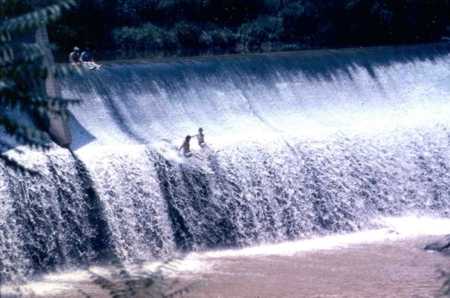The dam owner is liable for the damages resulting from a dam's mis-operation or failure that would result in a sudden release of water downstream. In assessing the legal liability for a dam failure, there are two basic theories that are used, strict liability and negligence.

Strict Liability
The theory of strict liability essentially imposes liability as a risk of doing business and is derived from the old English case of Rylands v. Fletcher. In this case, a dam and reservoir were constructed by the defendants on a parcel of property with the owner's permission. A shaft gave way and caused the impounded water to destroy the plaintiff's property. The court ruled for the plaintiff, holding that when one brings onto his land, and collects and keeps there anything likely to do mischief, if it escapes, and it is a non- natural use of the land, he must keep it at his peril. The rule is that a defendant is liable when he damages another by a thing or activity unduly dangerous, in light of the place and its surroundings.
The concept of strict liability has been extended widely to activities that are considered abnormally dangerous. The basis for this is the risk of harm and potential magnitude of that harm. Factors to be considered in strict liability include the degree of risk, the potential gravity of harm should the risk materialize, the exercise of reasonable care, whether or not the activity is one of common usage, the appropriateness of the activity to the locality, and its value to the community.
Negligence
The alternative theory of liability is one of negligence, which is the most commonly utilized cause of action in tort litigation. Negligence is generally defined in terms of failure to exercise the standard of care of a reasonable person under similar circumstances. This standard in turn is based on the reasonable foreseeability of the risk. It is important to emphasize that the ultimate question though is, whether in light of that forseeability, how a reasonable person would have acted taking into account the potential magnitude of harm and the alternatives available. Thus, negligence can consist of a failure to act, or the failure to act in a reasonable manner.
In Maryland, the General Assembly has added statutory requirements on top of the Common law strict liability and negligence doctrines. Construction and repair of dams require state permits and those permits contain specific conditions for maintenance. Size, location, design, and public safety are all issues addressed by State law and regulations. The Administration may order structures built without permission to be drained or removed.
It is the owner's responsibility and obligation to act in a reasonable manner to inspect and maintain the dam and its appurtenances. Additionally, the Dam Safety Division of the Water Management Administration performs periodic safety inspections of Maryland dams. After each inspection, the owner is presented with a summary of findings and maintenance recommendations. These recommendations should be implemented to insure the dam's continuing safety.
Public Safety
In addition to the responsibility for dam maintenance, owners should also be aware of their responsibility for public safety. This includes the safety of people not authorized to use the facility. "No Trespassing" signs should be posted and fences and warning signs should be erected around dangerous areas. Liability insurance can also be purchased to protect the owner in the event of accidents.

Keep Off!
In conclusion, dam owners have both the legal and moral obligation to keep their dam in good mechanical condition. To ensure the safety of the dam and its appurtenances, following guidelines should be followed:
- Periodically monitor the condition of the dam and correct any deficiencies. Depending on the size of the structure and its operational history, this could mean anything from a occasional casual site inspection to a full scale annual evaluation by a professional engineer experienced in dam design.
- When the State Dam Safety Division inspects the dam, recommendations should be carefully reviewed and repairs made shortly thereafter.
- If abnormal conditions develop at the dam, or the dam shows signs of potential failure, the owner must be prepared to notify local and state authorities so every action possible can be taken to protect lives and property downstream, as well as the dam itself.
Riparian Rights
Care should be taken by owners when releasing or impounding water to protect the rights of downstream property owners. The system of riparian rights has been established through the courts, and permits each riparian owner to make a "reasonable" use of the water, having regard to the same rights existing for the other downstream riparian owners.
Professional Assistance
A dam with its associated works is a complex structure. Engineers who are experienced in the design, construction, and inspection of dams should be consulted for many of the operation guidelines and maintenance techniques identified in this manual.
The owner or operator of the dam should always keep in mind that each structure is unique in its construction and operation. When contacting a professional for assistance, there can be no substitute for the availability of historical records and documentation on the operation of the facility. Therefore, it is extremely important to follow the guidelines suggested in this manual.